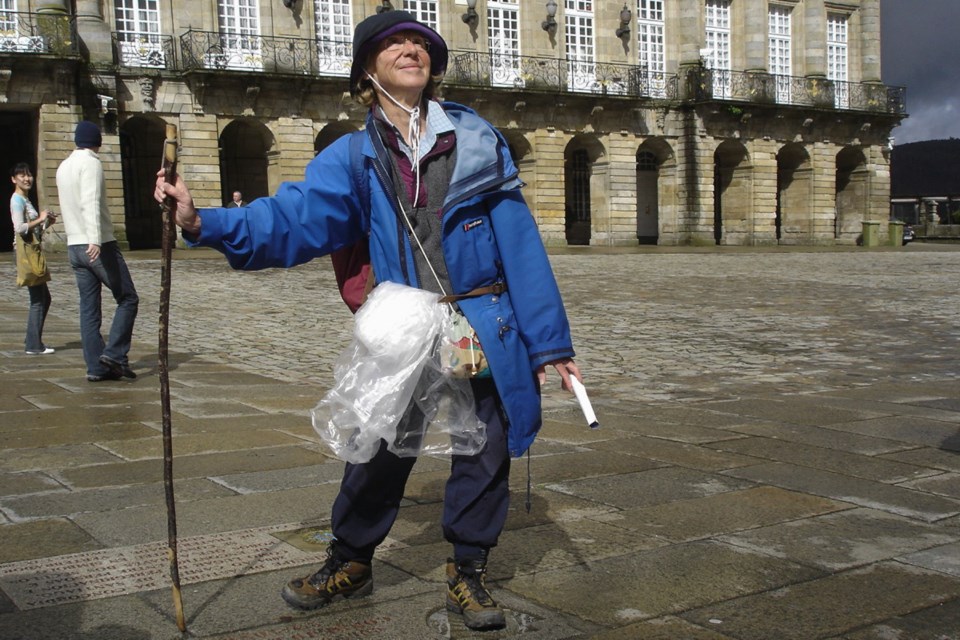Travelling as a pilgrim is a powerful way to experience your trip with a strong sense of purpose ŌĆö to go beyond tourism and connect more deeply with a place, a culture or a faith. Travellers considering pilgrimages in Europe have the opportunity to follow centuries-old routes or trace new paths in a search for perspective on their own culture ŌĆö or the culture of others.
The Camino de Santiago ŌĆö the ŌĆ£Way of St. JamesŌĆØ ŌĆö is EuropeŌĆÖs ultimate pilgrimage route. Since the Middle Ages, humble pilgrims have trod hundreds of kilometres across the north of Spain to pay homage to the remains of St. James in his namesake city, Santiago de Compostela. Today, more and more pilgrims are travelling this ancient pathway ŌĆö each┬Āfor his or her own reason. ItŌĆÖs a substantial commitment: Most take a month to walk the 800 kilometres from the French border. But I have witnessed the pure joy in Santiago de CompostelaŌĆÖs main square as well-worn pilgrims are overcome with jubilation as they reach their goal.
For eight centuries, Assisi, Italy, has been one of the most visited pilgrimage sites in all of Christendom. With every visit IŌĆÖm struck by how the spirit of St. Francis still pervades his hometown ŌĆö even nonreligious travellers become pilgrims of a sort. About 1200, this simple friar countered the decadence of the Church and society in general with a powerful message of nonmaterialism and a ŌĆ£slow down and smell GodŌĆÖs rosesŌĆØ lifestyle. A huge monastic order, the Franciscans, grew out of his teachings, which were gradually embraced by the Church. Sitting on a hill overlooking the town, hearing the same birdsong that inspired Francis, always calms my 21st-century soul.
For me, as a Lutheran, coming to ŌĆ£LutherlandŌĆØ is a bit like a Catholic going to Rome. Three destinations in eastern Germany make a meaningful Protestant pilgrimage. In Erfurt, visitors can tour the church and monastery where young Martin Luther struggled with his theological demons. Nearby is Wartburg Castle, where Luther hid after speaking out against Church corruption and where he diligently translated the New Testament into German. And in the unassuming little town of Wittenberg, Luther posted his 95 Theses on a church door, starting a chain of events that would split Christian faith and inspire new schools of art and thought. The sights in this region are physical reminders of courageous accomplishments of the Reformation ŌĆö and the enduring example Luther set for those who dare to speak truth to power.
Glastonbury, in southwest England near Bath, has been a religious site as far back as the Bronze Age. For thousands of years, pilgrims have climbed Glastonbury Tor, a hill seen by many as a Mother Goddess symbol. Glastonbury is also considered the birthplace of Christianity in England. According to legend, the Holy Grail lies at the bottom of Chalice Well, a natural spring at the base of the hill. EnglandŌĆÖs first church was built near this spring. Today, Glastonbury and its mysterious hill remain a centre for those on their own spiritual quest.
For me, one of the most powerful and beautiful experiences in Istanbul is the Ey├╝p Sultan Mosque. People from all over the Muslim world come here to recognize the burial place of Ey├╝p Sultan (also known as Abu Ayyub al-Ansari), the Prophet MuhammadŌĆÖs standard-bearer and companion, who was buried here during the siege of Constantinople in the 670s. This is where new Ottoman sultans received their sword of sovereignty as they took the throne. ItŌĆÖs a place to feel the pulse of the faith in Istanbul, and to recognize what an important spiritual capital this great city is.
Following tradition, many religious Jews travel to central and eastern Europe every year to pray by the graves of respected figures. They might place pebbles or candles on the tomb and leave messages on slips of paper. Increasingly, even nonreligious Jews design their own pilgrimages to meaningful sites for learning, reflection and remembrance. EuropeŌĆÖs Jewish quarters offer rewarding glimpses into the richness and longevity of Jewish culture. As you stand before the Doh├Īny Street Synagogue in Budapest, for example, you can imagine the Jewish Quarter as it thrived in the 19th century. A walk through this lively zone turns up artifacts and monuments that ask travellers to ponder the huge loss of culture, knowledge and humanity that took place between 1938 and 1945.
Regardless of your religion, Europe offers plenty of opportunities for a profound experience, including the chance to be inspired by ŌĆö and learn from ŌĆö a┬Āreligious scene that is not your own.
Rick Steves () writes European travel guidebooks and hosts travel shows on public television and public radio. Email him at [email protected] and follow his blog on Facebook.


